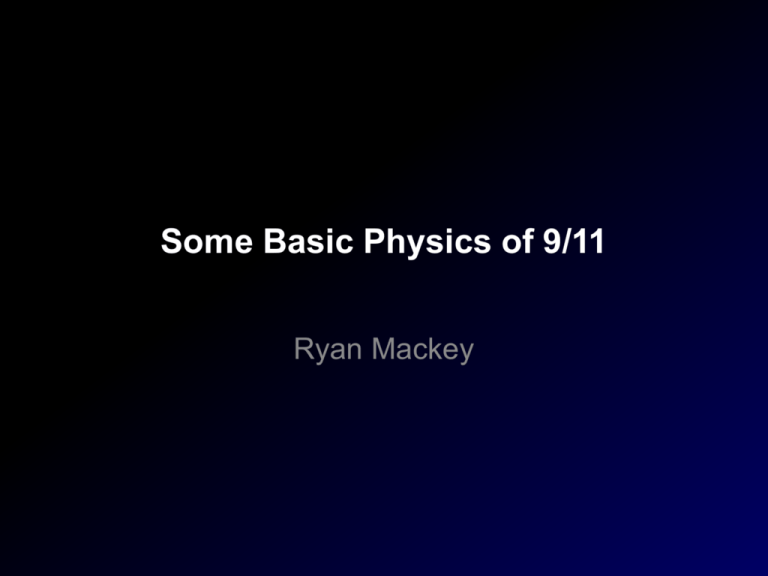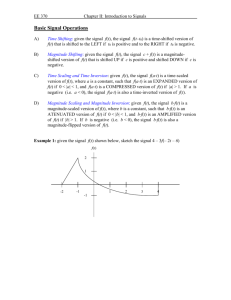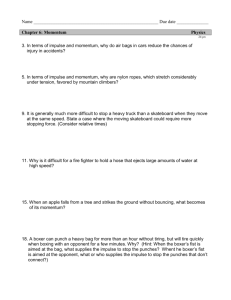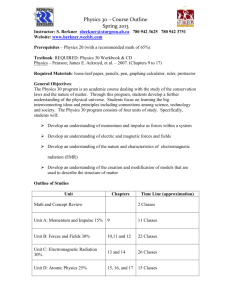
Some Basic Physics of 9/11
Ryan Mackey
Legal
This work is Copyright 2008 by Ryan Mackey. All rights
reserved. All opinions are those of the author alone and do
not represent any agency, public or private. Photographs
are used in accordance with Fair Use guidelines and may be
subject to their own copyright protection. The author can be
contacted at: rmackey_email@earthlink.net
Additional On-Line Resources:
9/11 Myths: http://www.911myths.com
Mark Roberts’ Collection: http://wtc7lies.googlepages.com/
9/11 Guide: http://911guide.googlepages.com/
Overview
• Many arguments put forth by the Truth Movement
are physical in nature
– E.g., can aircraft really penetrate steel structures?
– Were the collapses “too fast?”
– Is a progressive collapse likely, even possible?
• While a detailed investigation can be complicated,
the basic principles are simple
– Construct simple models to illuminate these processes
– While these will not prove what happened, can
demonstrate whether a given hypothesis is reasonable
– This is enough to disprove Truth Movement claims that the
“official hypothesis” is not credible
Overview: Physics of Impact
• Example Fundamental Question:
Can an aircraft penetrate a steel-framed structure?
–
–
–
–
–
–
–
Consider motivating examples from history
Identify what properties are important
Understand strength, hardness, pressure, impulse
Construct a simple model of the problem
Analyze based on simple model
Compare to more formal results
Use our model for prediction
Historical Impact Examples
Some collisions seem to do very little damage
Pirelli Tower, Milan, 18 April 2002
Photo Credit: AFP
Bank of America Tower,
Tampa Florida, 5 January 2002
Photo Credit: Associated Press
Historical Impact Examples
Others do much, much more
But why? How can we tell these apart?
F-4 Impact Sled Test
Sandia National Laboratories
USS Franklin After Kamikaze Hit,
30 October 1944
Photo Credit:
Puget Sound Naval Yard
What Properties Matter?
• Some have suggested the World Trade Center steel
should have survived impact because of:
– Hardness: Aluminum aircraft is much softer than steel
– Strength: Structural steel was far stronger
– However, there are plenty of counter-examples…
Before
After
F-16 Falcon canopy
bird strike testing
Photo Credit:
Southwest Research
Institute
What Properties Matter?
– Clearly hardness and strength only tell part of the story
– Other important quantities: Mass, speed, shape,
incidence angle…
Space Shuttle Challenger
(STS-7) window,
damaged by a flake of paint
Photo Credit: NASA / JSC
Understanding Hardness
• What is “hardness?”
– Not well defined.
– There are several scales, such as:
• Mohs Scale: Familiar 1 to 10 mineral hardness scale
• Rockwell Scale: Depth of penetration under
controlled test conditions
– Provides a basic measure of rigidity
• Related to strength, but also varies with elastic/plastic
behavior
• A “hard” material can be very fragile
Understanding Strength
• So what is “strength?”
– Defines the actual force required to break an object
(1 – ε) L
L
Side
Area A
Pressure on outside = F / A.
We also have σ = F / A
where σ is the axial stress
inside the solid.
Force F
Force F
While solid remains elastic, E is
constant (called the Young’s
Modulus)
The strain ε is the ratio of
The maximum stress the solid
stretch the solid experiences can stand is called σU or the
under stress, σ = E ε
Ultimate Strength
Effect of Hardness and Strength
Define four basic classes of impactor behavior:
Hardness Strength
Soft
Weak
Hard
Soft
Weak
Strong
Hard
Strong
Meaning
Examples
Impactor deforms and breaks Water,
on impact
foam,
plastics
Impactor shatters on impact Glass
Impactor deforms easily, but Rubber
remains a single object until
strain is extreme
Impactor is both rigid and
Spring
deformable
steel
Effect of Hardness and Strength
Case 1: Weak impactor flows around impacted object
Softness means only the part actually in contact transfers
momentum at any given moment
Weakness means the impactor absorbs little energy as it
deforms, but much of it may bypass target completely
Effect of Hardness and Strength
Case 2: Brittle impactor jars impacted object, then fractures
Hardness means at contact, there is a higher momentary
pressure spike as mass behind contact resists compression,
but then breaks
Impactor still absorbs little energy as it deforms
Effect of Hardness and Strength
Case 3: Flexible impactor deforms until it stops or breaks
Softness means the impact is relatively gradual, with no
sharp spike at contact
Strength means more of the impactor mass participates,
though the impactor absorbs some energy as it stretches
Effect of Hardness and Strength
Case 4: Strong, elastic impactor undergoes slight
deformation as momentum flows to the point of contact
Creates higher and sustained pressures at contact
May dissipate more energy as it deforms, but may also
remain elastic if much stronger than impacted object
Impact Severity: Impulse and Pressure
• When calculating impact damage, we usually construct a
pressure-impulse curve:
– Pressure: Force divided by area – the “average force” of impact
– Impulse: The total change in momentum caused by the impact
(“total amount of force over time”)
Newton’s Second Law:
If m constant,
F = m dv / dt,
so
F = dp / dt, where p = m v
dp / dt = m dv / dt
F dt = m dv = Impulse
– Need both high pressure and a large impulse to cause damage
• If pressure is too low, column stays elastic and springs back
• If impulse is too low, the column will bend but won’t displace
enough to cause it to fail, and may spring back
• Pressure and impulse are both related to force! They are not
really independent
Simple Model: Wing Section Impact
• Now let’s construct a simple model:
Top View
Side View
Density ρ
Velocity v
L
Impact
area A
– Represent aircraft wing as a slug of uniform density ρ at
velocity v, length L, interacting with a vertical column with
contact area A
– Assume we have the weakest type of impact, i.e.
hardness and strength of the wing section are small
• We ignore mass outside the contact area in this case
• Reasonable if the fuel’s momentum dominates the
impact, but this will underestimate impact severity
– What force and impulse does the column experience?
Wing Section Impact Solution
• Write Impulse Equation:
– If column doesn’t fail, assume it brings entire slug of fuel
to a stop: dv = v, and mass m = density times volume:
I = m dv = (ρ A L) v
– We now have I, but need to find force F to get pressure:
I = m dv = F dt
– Now dt is the length of time for the entire slug of fuel to
pour into the column:
dt = L / v, so F L / v = ρ A L v
F = ρ A v2
p = F / A = ρ v2
Wing Section Impact: Numerical Estimate
• Now use our equations to estimate the impact severity
• How much fuel impacts an average column? How fast?
– Need to find length, area, density, and velocity
– Information can be found in NIST report, etc.
Width of perimeter column = 14” (NCSTAR1-1 pg. 10)
Height of wing section ~ 16”, Length of wing section ~ 120”
(NCSTAR1-2B pg. 86) (see figure on next page)
Velocity = 650 ft/s (AA 11) or 790 ft/s (UA 175)
(NCSTAR1-2B pg. 170)
Jet fuel density = 0.81 kg / ℓ = 50.5 lbm / ft3
Wing Section Impact: Numerical Estimate
NCSTAR1-2B Figure 4-32, pg. 86
AA 11
UA 175
Pressure
p = ρ v2
4600 PSI
6800 PSI
Impulse
I = ρALv
15900 lbf-s
19300 lbf-s
Comparing to Column Strength
• NIST provides pressure-impulse curves required
to break typical WTC core columns
Our Results
NCSTAR1-2B Figure 10-5, pg. 376
NIST graphs use
impulse per
square inch
rather than total
impulse – divide
our figures by
1 ft2 = 144 in2 to
match
Comparing to Column Strength
• Our rough calculations are pretty close to NIST
rough estimates (1-2B Chap. 10)
– Estimated pressure is right on target
– Estimated impulse is a little high, but in family
– NIST models (more detailed) may assume deflection
of fuel parcel, or entrainment away from column by
bits of aircraft structure, rather than complete collision
• Demonstrates that, at this speed, fuel alone can
plausibly fail core columns
• Certainly can fail perimeter columns!
Prediction: What Speed Causes Failure?
• We can use the same equations to estimate the
minimum speed to penetrate the perimeter
– A significantly lower speed should bend perimeter
columns, but not break them, and largely bounce off
– Pressure is more sensitive to change in speed, since
it scales as v2, while impulse only scales as v
– From NIST’s P-I curve, estimate that above 800 PSI,
at least some columns will not survive
p = ρ v2 = 800 PSI
v = (800 PSI / ρ )1/2 =
feet per second
– Therefore, we predict that an impact over 270 ft/s =
185 MPH will penetrate the structure
Self-Test: Do Our Results Make Sense?
• Does the pressure we computed make sense?
– Fire hoses operate at about 300 PSI, and produce streams at
about 100-150 MPH. Our jet fuel is traveling more than three
times as fast, so we expect pressures of a few thousand PSI.
• Does the total impulse make sense?
– 16,000 lbf-s is equivalent to the momentum of a 4,000 pound car
at 80 MPH, similar to our 700 pound slug of fuel at 450 MPH
• Do our numbers agree with other investigations?
– Yes. Our numbers are consistent with NIST first principles
estimates; pressure is right on, impulse is a bit higher (about
double the NIST estimate)
– NIST may have assumed a lower effective density or total mass
(partially fueled tanks, lighter wing structures, etc.), elasticity in
the wing structure, or deflection of fuel
Conclusions
• Momentum from fuel alone will allow an aircraft to destroy
steel columns
– Predict speed of > 185 MPH is needed to destroy major columns
– Explains why lower speed crashes do less damage
– If aircraft is low on fuel, only fuselage and engines may penetrate
• Mass and momentum, not strength and hardness of the
impactor, are most important quantities
– Stronger or harder objects could mean more mass (and more
momentum) affects structure rather than bypassing columns, but
given enough momentum, this is simply not required
• Damage caused to WTC Towers is completely credible
– Not proven – we have used many simplifications – but unless we
have neglected something major, our numbers are in the right
ballpark
Some Basic Physics of 9/11
Part II: Modeling
Ryan Mackey
What Is a Model?
• A model is a simplified representation of a real
system
–
–
–
–
Scale models
Mathematical models
Computer models
Analogue systems
• Designed to replicate behavior of real system
– Should contain some or all of the same physical
mechanisms seen in reality
– May let us work on one part of the problem at a time
– May provide a cheaper, easier example that is “close
enough”
How to Set Up a Model
1. Diagram the problem carefully
–
–
Indicate all pieces and how they interact, every step of
suspected mechanism
Write down all assumptions about components and how they
behave
2. Identify all important properties in each interaction
–
Estimate quantities where possible, round numbers are OK
3. Write down best guess equations for each interaction
–
–
Keep track of factors you are ignoring for now
Try to only ignore things that will have a minor effect
4. Use equations to determine scaling laws
–
–
Where possible, non-dimensionalize equations and find
characteristic numbers
Examples: Mach number, column slenderness ratio, Reynolds
number
Example: Modeling Tower Collapses
• Question: Should WTC 1 and 2 have totally
collapsed?
– Prohibitively difficult to test in full-scale
– Complex enough that it is “non-trivial” to simulate
• A few mathematical models have been advanced
– Bazant and Verdure, 2003
– Bazant, Le, Benson, and Greening, 2008
Example: Modeling Tower Collapses
• The Truth Movement has attempted a few
scale models:
Author anonymous
http://wtcmodel.blogspot.com
Author anonymous
http://www.freewebs.
com/democraatus
These, however, are not “good” models
Do not capture correct mechanisms
Are not properly scaled
Designing a Simple Collapse Model
• Suppose we simplify as follows:
– Assume each floor is mass m, height h
– Assume strength of each floor is equal to F ε h
• In other words, assume F is yield strength, ε is maximum
strain, so ε h is the displacement required for failure
• Has units of energy = force × distance
• Other parameters:
– Number of floors above and below
– Gravity g = 9.8 m/s2
• What we’re leaving out: (many things)
– Variation in mass and strength between different floors
– Loss of material after impacts
– Complexity of structural failure (impact, torsion, etc.)
Model Process
• Step 1:
M=km
h
Mg
m
h
m
h
m
– Upper block starts with velocity v1,
falls distance h
• For initial failure, v1 = 0
– Accelerates under force of gravity
• But how long it accelerates depends
on how fast it started moving, so use
an energy calculation instead:
M v 12 / 2 + M g h = M v 22 / 2
• So the faster it starts, the less time it
free-falls before hitting the next floor
• Less time means less increase in
speed (but always an increase)
Model Process
• Step 2:
M=km
m
h
m
h
m
– Upper block starts with velocity v2,
strikes next floor
– Inelastic collision occurs
• Floors “stick” together
• New speed found by conservation of
momentum:
0
M v2 + m v = (M + m) v3
– Note that the kinetic energy after
collision is less than before
• But energy is also conserved?
• Rest becomes damage, noise, etc.
Model Process
• Step 3:
M = (k + 1) m
– Columns absorb impact, until they
fail and buckle
– Again treat as conservation of
energy (note M has gotten bigger)
m
h
m
• Assume failure energy = F ε h
M v 32 / 2 - F ε h = M v 42 / 2
– After this, process repeats
• M and v have changed –
increased? Decreased?
• If v drops below zero, collapse
stops
Basic Equations
• Now collect our equations from each step:
M v 12 / 2 + M g h = M v 22 / 2
M v2 = (M + m) v3
M v 3 2 / 2 - F ε h = M v 42 / 2
• Any scale model we build must preserve all of
these proportions
– Otherwise, behavior will not be the same
– Rescaling means multiplying each equation by a
scaling factor – not just multiplying the pieces
• Need to keep those equal signs true!!
Example: Scaling By Length
• Suppose we build a model at 1/10th scale, but
otherwise identical – materials, construction, etc.
• What happens to our equations?
– Length terms h change by factor of ten, but it affects
other things too:
– Velocities change by factor of 10 (length divided by time)
– Masses change by a factor of 1,000! (volume = length
cubed)
– Gravitational acceleration g cannot change
– Strength F changes by factor of 100:
• Same column slenderness ratio and materials, so
same buckling stress, but force is stress times area
Scaling By Length: Equations
M v 12 / 2 + M g h = M v 22 / 2
h 1:1
M v2 = (M + m) v3
M v 32 / 2 - F ε h = M v 42 / 2
M v 12 / 2 + M g h = M v 22 / 2
100,000
h 1:10
10,000
100,000
M v2 = (M + m) v3
10,000
This equation is OK
10,000
M v 32 / 2 - F ε h = M v 42 / 2
100,000
Kinetic energy terms
are 10 times too small
1,000
100,000
Relative strength goes
up by 100 times!
Preserving Scaling
• Can we change something else to fix this problem?
– Yes, we can, IF we are careful
• Start by also scaling down time to fix first equation
– Scale time down by a factor of 10 to fix first equation
– This means total collapse time scales down, but also
velocities scale up (velocity = distance / time)
– Makes kinetic energy terms 10 times bigger (~ v2)
– Second equation stays OK – every term has the same
time dependence (both linear in velocity)
– But this causes another change: Structure energy (F ε h)
also scales up (energy = force times distance ~ 1 / t2)
– As a result, third equation is still not in balance
(see next page)
Preserving Scaling: Not Quite There
Start:
h 1:10
t 10:1
F 10:1
M v 32 / 2 -
F ε h = M v 42 / 2
M v 32 / 2 -
F ε h = M v 42 / 2
100,000
10 × M v32 / 2
100,000
1,000
100,000
- 10 × F ε h = M v42 / 2 × 10
1,000
100,000
Column energy absorption is still 100 times too big
Preserving Scaling, Cont’d
• After scaling length down by 10 and fixing velocities, the
structural energy absorption term is still 100 times too high
• How can we fix this?
– Need to be careful, since changes can have other effects
– For example, we could reduce F by 100 if we reduce
material yield strength by 100
• But if we do this, our model won’t be able to stand up
• Need to have yield strength > self-weight
– Our expression for absorption may also be too simple
• Depending on whether it buckles or ruptures, it may look
more like a spring, or some more complicated relationship
– One course of action: Test different model columns, by
themselves, until we get the right properties
Scaling Results
• If our equations are correct, and we scale
properly, we can replicate Tower behavior
– It should verify progressive collapse feasibility
• Scaling is much more complicated than it looks
– To scale down in size by 10, i.e. floors about 30 cm
high, must reduce structural energy absorption by 100
times, and expect collapse to take about five seconds
– To scale down by 100, i.e. floors 3 cm high (total
height 3.4 meters), would need to weaken the
structure by 10,000 times
• Other options:
– Only model part of the collapse, viz. only a few floors
– Computer simulation (in “full scale”)
Analyzing Model Trials
• Suppose we build a model carefully and it doesn’t
show the right behavior. Then what?
– First, check your model for accuracy
• Do all stages behave correctly? Do any of them look wrong?
• Are the simplifications too simple?
• Is it completely wrong, or just partly wrong?
– Next determine whether problem is qualitative or quantitative
• If you change parameters, can you reproduce the right effect?
What does the solution tell you? Is it completely out of reach?
• If you cannot cause the effect by changing parameters, what
would it take? Is it possible at all?
– If the error is qualitative, try to form hypotheses to explain
• Typically caused by a bad assumption or oversimplification
• It may also indicate previously unknown behavior
Conclusion
• Modeling is a powerful, reductionist approach to understanding
physical phenomena
– Allows replication of results – the very foundation of science
– Many options – mathematical, computer model, scale model, all or
just part of a given problem
• Modeling is much more difficult than it appears
– Without carefully explaining the setup and assumptions,
understanding scaling and relationships between quantities, it is
easy to go astray
– Often need to compensate for scaling with numerous changes to
other parameters
• A good model will correctly reproduce any behavior
– For example, it is possible to demonstrate the progressive
collapse mechanism of the WTC Towers in subscale
Bonus Round!
The Hardfire Modeling Challenge
The Hardfire Modeling Challenge
• Clearly state the phenomenon modeled, and
possible results of the test
– Diagram carefully and identify all important quantities
– Describe steps in the process and all equations
• Identify all assumptions and model choices
– Show how well model matches original situation
(scaling, materials used, etc.)
– Define initial conditions of model carefully
• Carry out the test and analyze results
– Keep testing until you have a definitive result
– Compare result to observed phenomenon and explain
– Identify and try to quantify sources of inaccuracy
The Hardfire Modeling Challenge, Part 2
• Seek independent evaluation of your model
– Teachers and professors are a great resource
• Improve your model where possible, and check
for consistency of results
• Try to work out what it would take to get the
opposite result
– Is it possible at all? With what parameters?
– A model that accurately predicts both results, and the
transition, is probably a very good one
• Share your results
– Online discussions, engineering conferences, ?
– Discuss with me: rmackey_email@earthlink.net






